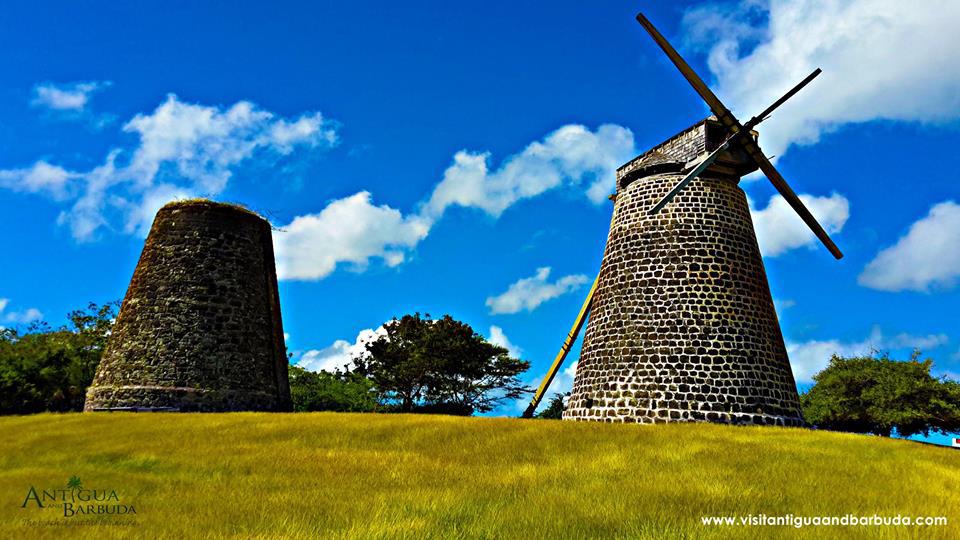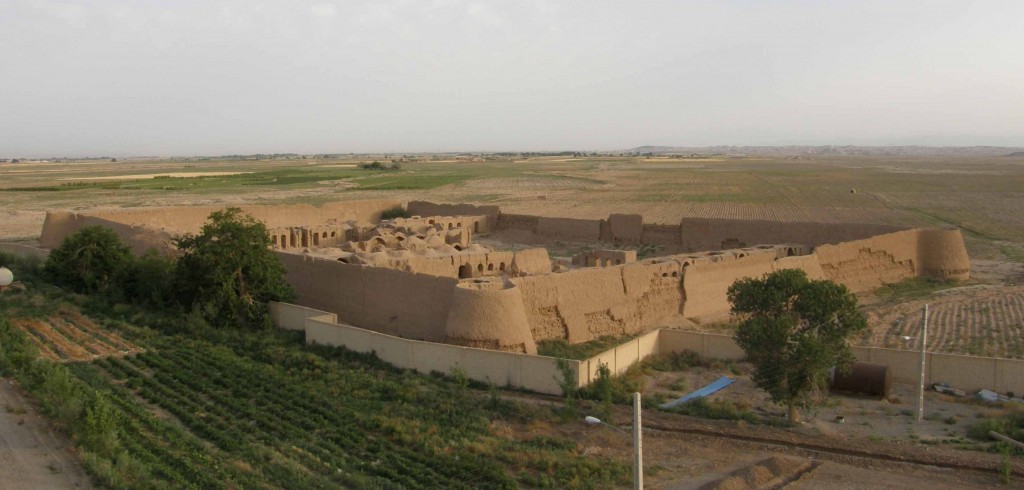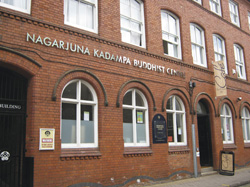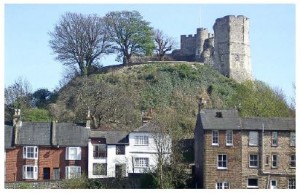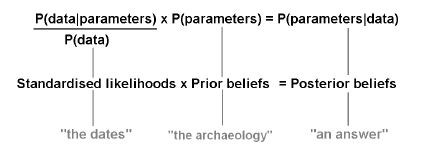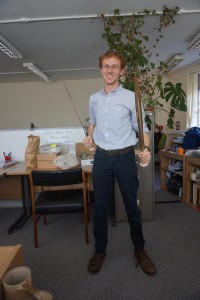As part of the Experimental Archaeology masters course students have the opportunity to skin and butcher the carcass of a Roe Deer (Capreolus capreolus) using stone tools. Here are some images of the process – a full description of the butchery (including videos!) can be found HERE. Continue reading
Category Archives: Around the Department
“Landscape Legacies of Sugar in Antigua” by Dr Christian Wells
In an additional research seminar on Wednesday, Dr Christian Wells from the University of South Florida spoke about his fascinating interdisciplinary work on the site of former sugar cane plantation Betty’s Hope in Antigua. Betty’s Hope was one of the largest and oldest sugar cane plantations, active from 1651-1944. The land of the plantation is today owned by descendants of former slaves, but has become eroded and degraded, possibly because of the monocropping of sugarcane over such a long period of time. However, farmer ethnographies say it was only after independence in 1981 that soil began to be unproductive. Part of the aims of the project are to discover the reasons for the degradation in soil productivity so the present farmers can benefit from this knowledge.
Research Seminar #20: “Roman Iron Industry in the Weald” by WIRG
The archaeology department got two for the price of one last Friday with talks from Jeremy Hodgkinson and Jonathan Prus, both from the Wealden Iron Research Group (sponsors of one of the department’s PhD studentships).
Research Seminar #19: “Landlord villages of the Tehran Plain” by Dr Ruth Young
As her second research seminar in two days, Dr Ruth Young joined us for our departmental seminar on Friday 4th March to talk about Landlord villages of the Tehran Plain: Historical Archaeology in Iran. The project looking at Landlord villages was in collaboration with Hassan Fazeli Nashli at the University of Tehran. It was concerned with the material culture of the recent past, particularly of the ‘ordinary’ people (and especially women) in the walled villages of the Tehran Plain. As the mudbrick villages are slowly being melted by rain it was also an important aspect of the project to record and situate these villages in an historical and ethnographical framework.
Faith and Place in Leicester: South Asian Buddhist Viharas Translated to the UK
On Thursday 3rd of March 2016, Dr Ruth Young from the University of Leicester came to talk to us about the translation of Buddhist faith practices from their origins in South Asia to the UK. In one hour we were given a whistle stop tour of Buddhism from Lumbini to Leicester. This project is being carried out in conjunction with Dr Young’s college Deirdre O’Sullivan. It focused on an exploration of Buddhist structures, monuments and objects as they are found and experienced in South Asia, compared to how these features are translated into a UK context. Dr Young talked about the tensions of buildings in faith and heritage contexts. Buddhism is often associated with monumentality and ritual, previous archaeological investigations usually focus on identifying stupas and relics, creating typologies and sequences of structures but often forget to think about the influence of lived faith practices.
Research Seminar #18: “Managing Material Transformations” by Dr Nadia Bartolini

The Eden Project is one of the partners on the AAFH project. It was built in the pit of an old clay mine. Credit: Eden Project.
On Friday Dr Nadia Bartolini from the Assembling Alternative Futures for Heritage project (AAFH or Heritage Futures) came to talk to us about the theme of Managing Material Transformations within the project. AAFH is a four year AHRC funded project involving UCL, the Universities of Exeter and York and Linnaeus University (Sweden). The wider project aims to develop a broad, international and cross-sectoral comparative framework for understanding heritage in its most expansive sense. Its goals centre on sustainable heritage management, encouraging sharing of knowledge across domains and creating toolkits that can be used in management briefings.
Research Seminar #17: “Shell-keeps Re-visited” by Robert Higham
This week’s seminar was a very informative presentation on the shell-keeps of the UK. Robert Higham, an Honorary Fellow of the University of Exeter, led us through the details of what makes a shell-keep and the vast array of keep architecture found in the UK. Prof Higham revisited many of the shell-keeps recorded antiquarians and refined the list to those that met all of the architectural criteria, reducing the historiographical list of roughly 120 down to 20 surviving examples. These shell-keeps appear to be a design that is particular to the UK, with the majority being constructed by the ‘wealthiest of castle owners’. There is no evidence for timber precursor structures and the shell-keep is essentially an Anglo-Norman high status structure.
Forensic Archaeology Practical
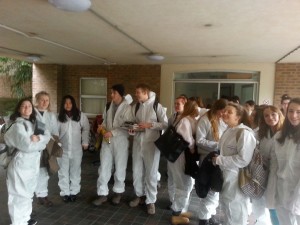
Students ready to head off to the site
If you went down to the woods on Friday you were in for a big surprise – around 30 white-suited undergraduates digging for skeletons! It was the Introduction to Forensic Archaeology practical session, a day long excavation providing the students with a practical exercise in the location and recovery of buried human remains. The students were first given a brief on the scenario and then were trudged up to the suspected burial ground – a wooded area on the edge of the university campus where plastic skeletons had been buried in previous months/years. Here’s a few pictures from the day!
Research Seminar #16: “Peopling the Past” by Alex Bayliss
Prof. Bayliss (Historic England, University of Stirling) presented an entertaining overview of how the application of Bayesian chronology to archaeological research has the potential to provide specific information and considerably narrow date ranges. She expounded the importance of constraint by using the information already known about a site to provide limits for modelling.
This is because the mathematical model has to incorporate what might seem to be obvious information to us, in order for it to recognise and discount parts of the sample date range that do not fit. For example, putting into the model that a structure’s destruction date must come after it’s start date seems a pointless statement to us, but without this information the model will produce a date range that extends to cover all possibilities.
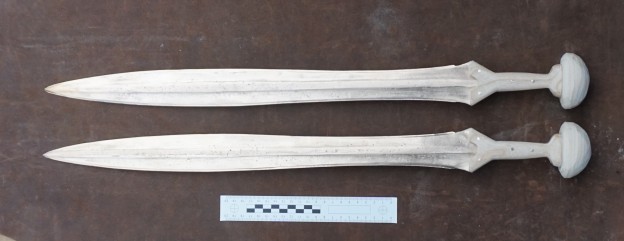
Creating Replica Bronze Swords with Matt Knight
Following the success of my funding application before Christmas, I finally embarked on the first of my experimental productions this week. I spent two days working with a brilliant metal-caster, Neil Burridge, in producing replicas of a broken sword from a Bronze Age hoard from St. Erth, Cornwall. Two successful castings were produced and worked in preparation for use and destructive experiments to be undertaken at a later date. Continue reading

